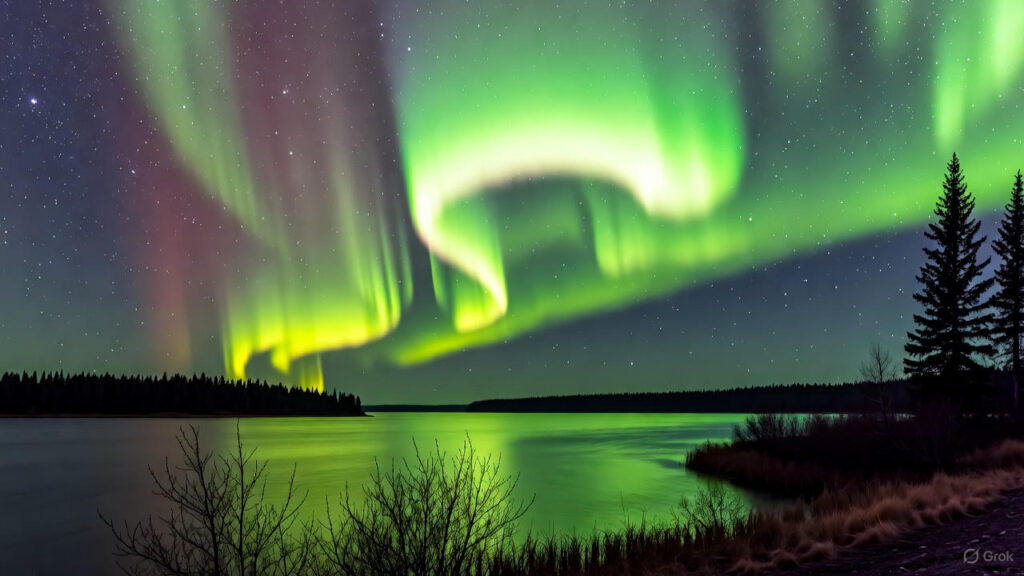
Discover how to see the Northern Lights with our complete step-by-step guide. From top viewing spots to aurora forecast apps, plan your perfect chase—no matter the year!
How to See the Northern Lights: Your Ultimate Aurora Borealis Guide
The Northern Lights—nature’s most mesmerizing light show—paint the sky in shimmering greens, purples, and pinks when solar particles collide with Earth’s atmosphere. Visible in high-latitude regions during dark, clear nights, the aurora borealis is a bucket-list spectacle for travelers worldwide. While solar maximum years bring more frequent displays, you can witness this wonder any year with the right planning. This timeless guide teaches how to see the Northern Lights step by step—covering prime seasons, top locations, forecast tools, and photography tips. No telescope or special gear required—just patience, preparation, and a sense of adventure. Let’s light the way.
Gathering Your Essentials
Pack smart for cold, dark nights—comfort is key to how to see the Northern Lights.
- Clothing: Thermal base layers, fleece mid-layer, waterproof jacket, insulated pants, wool hat, gloves, and sturdy boots.
- Gear: Tripod (for photos), headlamp with red light mode, thermos for hot drinks, hand warmers.
- Tech: Aurora forecast app (e.g., My Aurora Forecast, Aurora Alerts), offline maps, portable charger.
- Camera: DSLR/mirrorless with wide-angle lens or smartphone with night mode.
- Comfort: Folding chair or blanket for long waits.
Tip: Layer like an onion—temperatures can drop to -20°C (-4°F). Download apps before travel; cell service is spotty in remote areas.
Understand the Best Time of Year
Timing boosts your odds—how to see the Northern Lights depends on darkness and solar activity.
- Season: September to April—long nights north of the Arctic Circle.
- Peak Months: October to March—colder but clearer skies.
- Equinox Boost: March and September see heightened activity due to Earth’s tilt.
- Moon Phase: Avoid full moons; new moon or crescent enhances faint auroras.
- Solar Cycle: Every 11 years peaks (e.g., 2025); quieter years still show lights—check NOAA’s Space Weather Prediction Center.
Tip: Plan 3–7 nights in one spot—clouds can block one night, but not all.
Pick the Best Viewing Locations
Head to the “aurora oval” (60–75°N latitude) for 90%+ success rates.
- Norway (Tromsø, Lofoten): Fjords, midnight sun-free winters, easy access.
- Iceland (Reykjavik outskirts, Jökulsárlón): Ring Road flexibility; combine with waterfalls.
- Finland (Lapland, Rovaniemi): Glass igloos, reindeer safaris.
- Sweden (Abisko): “Blue Hole” microclimate—fewest clouds in Scandinavia.
- Canada (Yellowknife, Whitehorse): 240+ clear nights yearly; Indigenous-led tours.
- Alaska (Fairbanks): Budget-friendly; Chena Hot Springs for soaking.
Tip: Escape city lights—drive 30–60 minutes to rural lakes or mountains. Use Dark Site Finder for light-pollution maps.
Master Aurora Forecasts and Weather
Real-time data is your superpower.
- Kp Index: 3+ = good show (scale 0–9); check SpaceWeatherLive.
- Cloud Cover: Use Windy or Yr.no—clear skies are non-negotiable.
- Apps & Alerts: Set notifications; join local Facebook groups (e.g., “Tromsø Aurora Chasers”).
- Local Time: 9 PM–2 AM peak; some activity until dawn.
Tip: Book refundable tours—guides chase clear skies and often guarantee sightings.
Find the Perfect Spot and Wait
On-site strategy for how to see the Northern Lights.
- Arrive by dusk: Eyes need 20–30 minutes to dark-adapt.
- Face north: Aurora arcs above the horizon.
- Stay warm: Sip cocoa, do light stretches.
- Be patient: Faint green glow can explode into curtains in minutes.
Tip: Bring a red-light headlamp—preserves night vision (white light ruins it).
Capture the Magic (Photography Tips)
Don’t just watch—preserve the moment.
- Settings: ISO 800–3200, 10–30 sec exposure, f/2.8 or wider, manual focus to infinity.
- Stability: Tripod mandatory; use timer to avoid shake.
- Foreground: Include lakes, trees, or cabins for scale.
- Phone Hack: Night mode + tripod; apps like NightCap.
Tip: Practice in your backyard on stars first—aurora moves fast!
Important Considerations
- Weather Roulette: 50–70% of nights may be cloudy—flexible itineraries win.
- Safety: Travel in pairs, share location, carry emergency beacon in remote areas.
- Respect Nature: Stick to paths; no drones near wildlife.
- Budget: £800–£3,000 per person (flights, lodging, tours); off-season (Oct/Nov) cheaper.
- Eco-Travel: Choose carbon-offset flights, support local communities.
Mastering how to see the Northern Lights is about preparation, patience, and wonder. Whether it’s a solar maximum year or not, the sky rewards the persistent. Book your trip, charge your camera, and step into the glow—nature’s greatest light show is calling.
FAQ
Q: Can I see the Northern Lights every year?
A: Yes—solar minimum years have fewer displays, but prime locations still deliver 100+ nights annually.
Q: What if I can’t travel far?
A: Northern Scotland (Shetland), Michigan’s Upper Peninsula, or live webcams (e.g., Explore.org) are options.
Q: How cold does it get?
A: -10°C to -30°C (14°F to -22°F); dress warmer than you think.
